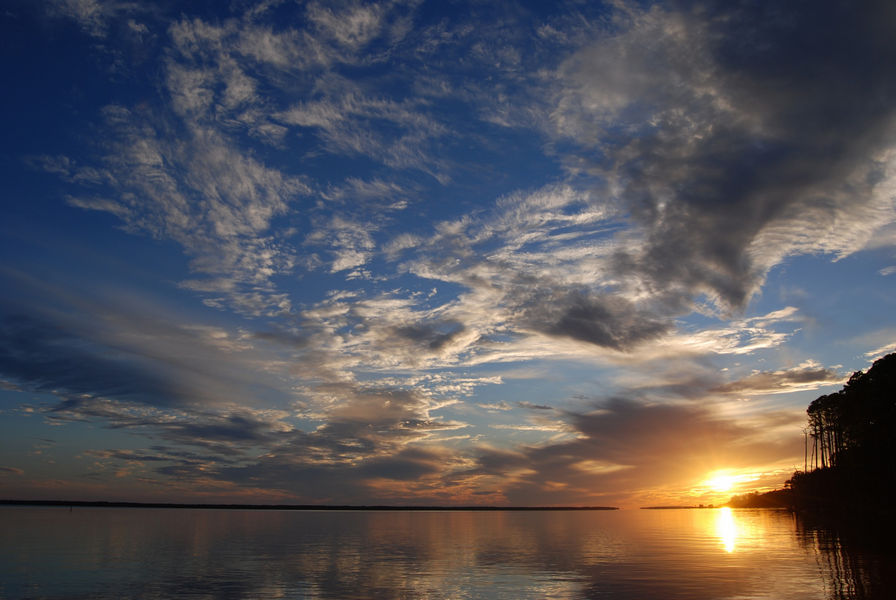The relatively undisturbed miles of Gulf of Mexico beach and dunes of the barrier islands provide essential habitats for a number of endangered and rare birds. Since 1985, Apalachicola National Estuarine Research Reserve (ANERR) has concentrated most of its avian management efforts on several listed species, including least terns, black skimmers and American oystercatchers, which use habitats within the reserve for breeding and nesting. The research section's annual nesting shorebird survey is concentrated in two areas within ANERR - "Bird Island" and the St. George Island Bridge Causeway.
In 1995, a 5-acre island created from dredged spoil material was constructed in Apalachicola Bay by the U.S. Army Corp of Engineers, south of the Apalachicola River mouth, and modified by ANERR for use as a bird-nesting habitat. ANERR and the Florida Fish and Wildlife Conservation Commission (FWC) had input on the design and size of the island. Scallop shell fragments were brought to the island by boat and scattered among the oyster shells that were already present in the dredge material. The goal was to attract least terns and black skimmers from the St. George Island Causeway to this newly constructed "Bird Island." Bird Island has been monitored annually since its inception and continues to attract nesting birds. The list of nesting species has increased over the years and includes Caspian terns, royal terns, least terns, sandwich terns, black skimmers, American oystercatchers and brown pelicans. From April 1 to Aug. 31 every year, signage is placed on Bird Island to indicate that it is a bird nesting area, and the island successfully continues to attract various members of these species each nesting season.
ANERR has also monitored the St. George Island Bridge causeway for nesting birds since 1985. When nesting counts first began, primarily least terns and black skimmers nested in this area. Over time, Caspian terns, royal terns, sandwich terns, American oystercatchers and laughing gulls have joined the species nesting here. ANERR efforts to protect these side-of-roadway areas from passing vehicular traffic included fencing off the roadside to prevent motor vehicles from pulling onto nesting areas, posting signs and working with the Florida Department of Transportation to reduce speed limits and make the nesting area an emergency-only pullover area during nesting season.
In 2004, a new St. George Island Bridge was constructed and the old roadway was disconnected from the causeway, creating a separate island out of the causeway area. The reserve worked with the bridge builders to remove the concrete roadway, creating a sandy area that would be desirable for the birds to continue nesting. The causeway has been designated a Critical Wildlife Area (CWA) by FWC and signs indicating this designation are placed on the causeway throughout nesting season.
In addition to formal shorebird monitoring in these two areas, ANERR staff also watch for shorebird monitoring in other areas of ANERR and coordinate with FWC officials in their efforts to monitor various plover species nesting. These plovers nest mostly on the outer beach areas of the barrier islands. Many ANERR staff members also take part in the National Audubon Society's "Christmas Bird Count," an annual, multi-continent effort to monitor and census bird populations throughout the Americas. This area of the Florida Panhandle represents one of the last opportunities for these predominately ground-nesting species to experience success, as suitable nesting areas in Florida succumb to developmental pressure and other negative human impacts. Through its commitment to the monitoring of listed species, ANERR will continue to monitor the nesting density of these birds in future years.


